by Justin Mckibben | May 31, 2018 | Addiction, Addiction Medicine, Addiction Stigma, Addiction Treatment, Bill Nye, Celebrity, Drug Abuse, Stigma
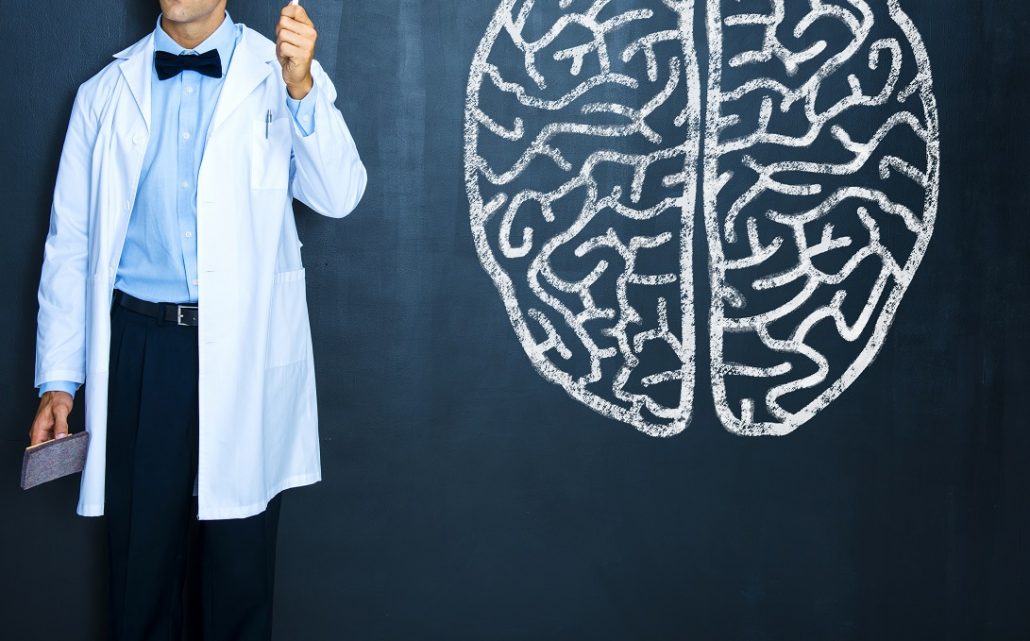
That quirky Science Guy with those theoretically-funky and quantifiably-fresh bow ties from your childhood is back to work making science fun with the help of celebrities and strange experiments. Since 1993, Bill Nye has been trying to teach kids, and the world, about the importance of exploring science. Now, with two seasons of his Netflix series Bill Nye Saves the World already in the bag, our boy Bill has made his way to a hard-hitting topic that has a huge impact on America today- addiction. And according to the science guy himself, one of the biggest myths he is out to debunk is that addiction is a choice. In fact, this kind of stigma may be one of the single greatest hurdles for those who need treatment.
Now we can admit that Bill Nye is not necessarily an authority on mental health or behavioral science. However, the American science communicator began his career as a mechanical engineer for Boeing Corporation, inventing a hydraulic resonance suppressor tube used on 747 airplanes. He eventually left the company to pursue a career in entertainment, and following the success of his show, Nye continued to advocate for science. He became the CEO of the Planetary Society and helped develop sundials for the Mars Exploration Rover missions. So while he may not be an expert himself, it is safe to say he is a smart man who knows how to do his research.
In a recent interview with The Fix, Bill Nye shared some of his thoughts on some of the most crucial questions we have to examine when looking at addiction and its effects. Beyond that, we look at some of the topics covered in the Netflix piece.
Bill Nye Acknowledges the Prevalence of Addiction
One of the first things Nye does is to point out how widespread the issue of addiction truly is. When asking his studio audience if they know someone living with addiction, whether in recovery or not, almost everyone in the room raised their hands. Nye tells The Fix,
“Addiction is a huge problem for our society. It’s very expensive. You have addicts getting addicted to all sorts of things and they become unproductive, they destroy their families, and they, for better or for worse, have very low qualities of life,”
Bill Nye emphasizes that addiction is not limited to a specific economic or social class, sharing a story about the wife of a close friend. This was a person who became addicted to the powerful opioid Oxycontin after breaking her ankle. This family quickly fell apart due to the addiction, despite being successful and affluent.
“It was horrible. It went on for years and years…she got into harder and harder drugs. She was an accessory to murder with a drug dealer, and this was a family that was very well off because of their success and careers. It was really heartbreaking.”
Throughout the segments, Bill Nye continues to expand on the brain’s involvement in addiction. He even bring in people to discuss treatments, and talks about behavioral addictions.
Addressing Choice and Changes in the Brain
Early on in “The Addiction Episode” of Bill Nye Saves the World, the science guy makes a point to distinguish from “really liking chocolate or re-watching episodes of Game of Thrones” and “real conditions that do real harm.”
He immediately points out that our society often believes addiction is an obvious choice, an avoidable weakness, or a moral failure. If you have been awake for the past few decades, you have probably seen this opinion expressed at some point. From lengthy articles like this one (but with better writers) to viral videos on social media featuring some guy yelling at a camera phone because it makes him an expert, people have argued that if people were strong enough they would fix themselves. Bill Nye says,
“I’m here to tell you that just ain’t so.”
Now, while Bill Nye may not be an addiction expert himself, he has surely done his homework over the years by interviewing various experts in the field of addiction medicine and recovery. This isn’t even the first time he’s tried to debunk the myth of addiction being a choice. Years ago he did a similar episode addressing addiction on the show The Eyes of Nye, which featured addictionologist, Dr. Drew. In this past interview, Dr. Drew makes a very strong argument stating:
“The definition of a disease, to me, would be an abnormal physiological process brought on by a relationship between the genetics of the individual and the environment that creates a set of signs and symptoms that progress in a predictable way which we call ‘natural history,’ and by effecting the natural history we can create a predictable response to treatment. That is a disease, and addiction does fit that.”
On Bill Nye Saves the World, he uses his trademark fun and goofy way to explain how dopamine released in the brain’s reward center by particular behaviors over time actually changes the brain, with the help of orange trees and a light-up LED brain. Nye states,
“When and if this happens depends on both the hand you are dealt- your genes- and what’s going on around you- your environment- it’s akin to the old question of nature versus nurture. Except with addiction, it’s both. It’s nature… and nurture!”
Bill Nye explains later on how the human ability to adapt is intimately connected to addiction, adding that while we can get used to just about anything when our brains and bodies adapt to a drug it makes quitting incredibly difficult to accomplish, especially when you factor in withdrawal symptoms.
Putting Addiction into Perspective
But good old Bill doesn’t expect you to just take his word for it, either. Throughout the episode he speaks with various people concerning the truth about addiction and different kinds of treatment for addiction. The conversations include people with various points of reference, including:
-
Maria Bamford, comedian/actress
Bamford sits with Bill to discuss her own experience with what she calls an “addictive process”: an eating disorder. She talks about finding a 12-Step program at 21 years old, and the value she has found in connecting with others.
-
Cara Santa Maria, science communicator and journalist
Cara Santa Maria talks about the importance of having individualized treatment options that go above and beyond the traditional 12 step programs. She also believes that people should also consider connecting addiction to deeper psychological issues, such as trauma.
Dr. Carl Hart advocates that there is a real need for more comprehensive assessments concerning addiction. Dr. Hart believes the vast majority of people who use drugs, including heroin, do not become addicted. Dr. Hart believes also putting too much focus on the drugs and not enough focus on the behaviors makes treatment less effective.
-
Lieutenant Robert Chromik Jr. of a Sherriff’s Office in Ohio
The officer from Ohio states that his precinct has been working to help people get clean instead of arresting them. He says that out of 2,400 “clients” involved in the program, 81% are now living clean. Lt. Chromik also agrees with his fellow panelists that specialized treatment is essential because there is no one-size-fits-all answer.
In the end, the episode is pretty interesting. This writers only critque would be that the ending itself seems almost incomplete. It includes an unrelated, but pretty cool segment about aquaculture with a guest scientist. Still, without a definitive signing-off moment to summarize the concepts Bill covers, the impact of a scientific understanding of addiction almost feels lost. However, between the piece from The Eyes of Nye and this new episode, there is a lot of interesting information that is essential to our society learning to treat addiction, and those who are suffering, better. Overall, one of the most important parts of the conversation is the emphasis on compassion and supporting effective and individualized treatment options. Bill Nye and the many individuals throughout the episode present various perspectives on the issue of addiction. Surely, not all these people agree on everything. Still, the episode works hard to offer a simple explanation of the scientific evidence in the brain and the body as to how addiction really works. Hopefully, more people can appreciate the science behind it.
Thanks Bill. Science still rules.
Another important take away from this episode is that personalized treatment is a unique and life-changing tool to helping get people off of drugs or alcohol. If you or someone you love is struggling, there is professional and innovative help for you today. Please call toll-free now.
CALL NOW 1-888-922-5398
by staff | May 2, 2018 | Addiction, Addiction Stigma, Bullying, Coping Skills, Depression, Family, Mental Health, Mental Health Stigma, Mood Disorders, Parenting, Post-traumatic Stress Disorder, Stigma
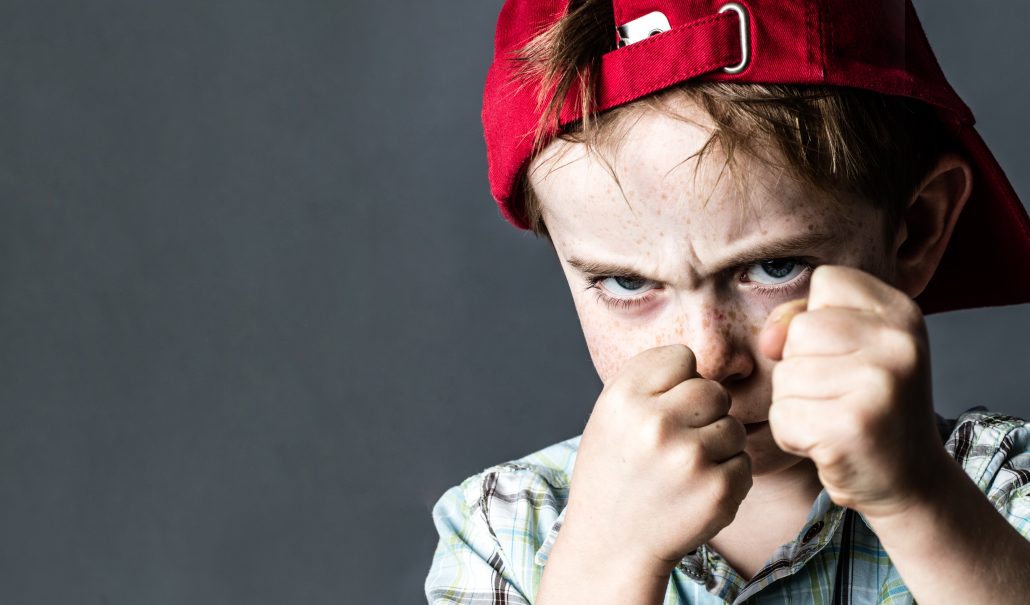
(This content is being used for illustrative purposes only; any person depicted in the content is a model)
Bullying is a concept we are all familiar with. We each experience bullying at some point in life, to one extent or another. Even those who become bullies have often been bullied at some point. Technology and social media have created a whole new breed of cyberbullying, and too many people don’t take bullying very seriously. When you look at bullying statistics, the impact can lead to other real issues, including substance abuse and addiction.
To be a Bully
Firstly, let us look at what it is to be a bully. The title is typically described as the use of superior strength or influence to intimidate, typically to force someone to do what one wants. The site stopbullying.gov defines it as unwanted, aggressive behavior that involves real or perceived power imbalance. This behavior is repeated or has the potential to be repeated over time. It also concludes that both those who are bullied and those who bully often have serious, lasting problems.
Bullying statistics show three categories of behavior:
1. Verbal Bullying
This type of bullying is about the things we say or write. Verbal bullying includes:
- Teasing
- Name-calling
- Inappropriate sexual comments
- Taunting
- Threatening
2. Social Bullying
This involves hurting someone’s reputation or relationships. Social bullying includes:
- Leaving someone out on purpose
- Telling other children not to be friends with someone
- Spreading rumors about someone
- Embarrassing someone in public
3. Physical Bullying
Physical Bullying involves hurting a person’s body or possessions. It includes:
- Hitting/kicking
- Pinching
- Tripping
- Pushing
- Spitting
- Taking or breaking someone’s things
- Making mean or rude hand gestures
Sadly, the prevalence of bullying often convinces people that it is just a rite of passage. A lot of people don’t take the issue seriously enough. Adults often justify the behavior as a sign of immaturity, without realizing the genuine harm that comes from it.
The Impact of Bullying
Being bullied can lead to many other adversities in life, including physical violence and mental health problems.
Because both behaviors are so common, it is difficult to correlate bullying and substance use. When looking at addiction and bullying statistics, according to 2016 Monitoring the Future survey:
- More than 17% of children have tried drugs by 8th grade
- Almost 50% have used illicit drugs by senior year in high school
- Childhood alcohol use rates are even higher
According to the CDC’s 2015 Youth Risk Behavior Survey:
- 20% of American high schoolers have been bullied in school in the past year
- More than 15% have been bullied electronically in the past year
Bullying can erode a child’s self-esteem. It can deplete their confidence, even for those who parents may believe are confident enough to endure a bully. Over time, they learn to question their self-worth. If a bully targets a specific attribute of the individual, they may begin to obsess over it.Some bullying statistics show that those who have been bullied are six times more likely to be diagnosed with mental health issues. It is extremely common for victims of bullying to develop progressive behavioral disorders such as:
Over time, they may turn to alcohol or drugs to ease the pain. Also, the desire to fit in and feel accepted can lead a child using drugs to connect with people. Several studies show the risk factors for psychological health problems, substance abuse, and bullying statistics often overlap.
Similarity in Symptoms
When we look closer at bullying statistics and at the warning signs of substance abuse, we find that the symptoms are extremely similar.
Common Symptoms of Bullying
- Depression
- Anxiety
- Changes in sleep patterns
- Changes in eating habits
- Eating disorders
- Poor performance in school or work
- Loss of interest in activities
- Alcohol or drug use
Common Symptoms of Substance Use Disorder
- Mood swings
- Poor performance in school or work
- Depression
- Anxiety
- Insomnia
- Withdrawal from social activities
- Health problems
Looking at some of the more general warning signs we can see how many are present concerning both issues.
Substances and Bullying Statistics
Ultimately, drugs can become a crutch for numbing the emotional pain of being bullied. While it is harder to predict whether being the victim of bullying will lead to substance abuse, with bullies there is also a very real risk of developing issues with drug use and addiction.
Bullying statistics often show that bullies themselves typically suffer from a variety of emotional and behavioral challenges. Sometimes a child lives in a home with domestic violence, and so they become aggressive with their peers to expel their frustration. Yet, they may still use drugs or alcohol to escape the painful life at home. Even the act of bullying itself is typically an indication of diminished self-worth, and just like with the victims, that lack of self-worth can lead them to use drugs.
Some even believe bullying could be comparable to an addiction itself. Some psychologists compare bullying to other ‘process addictions’ like gambling, overworking or shopping. While we do not recognize bullying as an addiction, many believe the comparison could be helpful to address the issue.
Compassion and Care
Whether or not someone is a victim or bullying, or has been a bully themselves, we all deserve respect and compassion. When it comes to providing care for those who struggle with substance use disorder, it should always be a priority to help people develop healthy coping skills, while gaining self-worth. As people struggle to deal with emotional and behavioral challenges, there should be resources there to help guide them toward personal development. Not just getting off of substances, but also to empower them as an individual.
One issue we have with facing bullying head-on is that people typically think of a “bully” as someone inherently bad. However, life is not so simple. A child who bullies isn’t a bad child, they are just interacting with their world in an unhealthy and aggressive way. They still deserve understanding and support.
We commonly see the same stigma with people struggling with addiction. Too often they are labeled as “bad” people, but the truth is that they are just dealing with things in a self-destructive and unhealthy way. Dealing with substance use disorder and with bullying means meeting it with love and care, not judgment and punishment.
Perhaps if focus more on supporting people, we have a better chance of changing addiction and bullying statistics for the betterment of everyone.
Palm Healthcare Company believes in the importance of compassionate and comprehensive care for those struggling with substance abuse and addiction. Providing a safe medical detox, a personalized recovery program and an innovative approach to holistic health, our mission is to help people transform into the person they want to be. If you or someone you love is struggling, please call toll-free now.
CALL NOW 1-888-922-5398
by Justin Mckibben | Apr 26, 2018 | Addiction Treatment, Detox, Harm Reduction, Heroin, Inpatient Treatment, Needle Exchange Programs, News, Opioids, Outpatient Treatment, Professionals, Recovery, Safe Injection Sites, Sober Home
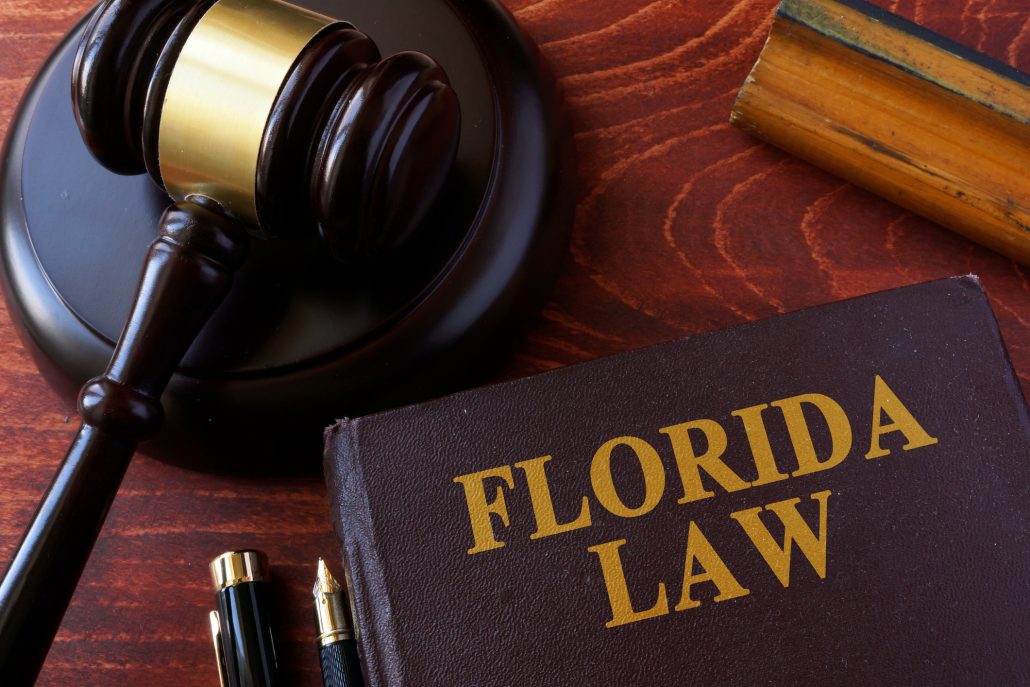
8 months ago, Florida was home to 953 licensed drug treatment centers, and 207 were in Palm Beach County. As of April 1, there are now 185 in Palm Beach, with 771 in the whole state. This decrease is due to the crackdown on fraud by Palm Beach State Attorney’s Office, which has led to 45 arrests in the last year and a half. So far, those arrests have led to 16 convictions. For State Attorney Dave Aronberg there is no sign of slowing down.
Recently, Dave Aronberg spoke with Opioid Watch to talk about the work his office has been doing to try and strengthen the addiction treatment industry. Chief Assistant State Attorney Alan Johnson also sat down to talk about how Palm Beach County is fighting to protect those who are coming to Florida for help. Johnson heads the office’s Sober Homes Task Force.
Dave Aronberg VS Purdue Pharma
According to Aronberg, he got involved with opioid-related issues back in 2001, when he was an assistant attorney general. Aronberg says he was asked by his boss, Bob Butterworth, to investigate Purdue Pharma. This Big Pharma giant is the producer of OxyContin. This powerful prescription opioid has been credited with making a heavy contribution to the opioid crisis. Dave Aronberg was to examine the marketing practices of Purdue Pharma, and is quoted in the interview transcript stating:
“I believe we were one of the first in the country.”
Of course, now Purdue Pharma is one of many big name pharmaceutical companies being accused in lawsuits across America. In fact, Delray Beach, Florida recently filed its own case against the company.
When asked about what he found, Aronberg said that Purdue was marketing the product like it was Advil. Purdue has been repeatedly accused of pushing this product as if it was far less dangerous than it actually was. In 2002, Dave Aronberg was elected to state senate, and shortly afterward the case against Purdue was settled. In the edited interview transcript, Aronberg is quoted:
“Purdue also offered $2 million to the state to establish its first prescription drug monitoring program. I worked in the state senate to get the PDMP enacted into law. But some conservatives refused to go along. They thought it was Big Government. So Purdue’s $2 million went away, because the offer expired. We didn’t get the PDMP till 2011. By then the carnage was horrific.”
Furthermore, Opioid Watch notes that a Purdue spokesperson confirmed that the state failed to implement a PDMP by July 1, 2004, which was the expiration of the companies offer.
Dave Aronberg Goes to Congress
In December of 2017, Aronberg went in front of Congress to testify concerning fraud and abuse in the addiction treatment industry. In this meeting, they discussed various issues with shady facility operators in Florida and made suggestions on how the law could step in to change it and protect patients. The interview transcript quotes Aronberg:
“In recent years, we’ve had an influx of unscrupulous operators who enrich themselves by exploiting those in recovery. As a consequence, we’re attracting thousands of young people from throughout the country into fraudulent rehab centers. (We’re talking about some, not all. There are good rehab centers, too.)”
Again, Aronberg found himself at battle with shady marketing practices. While investigating the treatment industry, Aronberg’s office discovered illegal operations that not only manipulated insurance providers but put patients at extreme risk.
From patient brokering, where illicit actors would sell patients with insurance to the highest bidders, to illegal kickback schemes being run by sober homes to outpatient treatment programs. Chief Assistant State Attorney Alan Johnson added information about the exploitation of urine analysis costs, and even some programs that began billing insurers for allergy and DNA testing. Aronberg states:
“We have a doctor who billed $7 million in nine months for allergy tests.”
Needless to say, the task force and state officials had their work cut out for them.
The ACA, ADA, and FHA
When talking about the many scams being run by various illegitimate businesses, the conversation came back to insurance and how these cons run. Here Dave Aronberg talks about his beliefs on how the law should step in and help restructure the current system.
“Number one: Change the Affordable Care Act’s fee reimbursement model to an outcome-based reimbursement model. Where the good providers are rewarded and the bad ones are paid less. Right now, the opposite occurs, so the more times you fail, the more money you get. There’s an incentive for more services and for more relapse. That shouldn’t be.”
After talking about the issues with the ACA, he talked about the ADA and FHA.
“The second change we need is this: the Americans with Disabilities Act and Federal Housing Act have been misused and exploited by bad actors who own flophouses.”
He went on to say,
“Local governments are largely prohibited from overseeing the sober home industry. If they want to require mandatory inspections, certifications, and registrations, they’re likely prohibited under federal law.”
In essence, Aronberg believes the law should allow local governments to create their own guidelines for health, safety and the general welfare of the patients. None of these demands seems outlandish, and with reasonable regulation, the reputable and effective providers in this industry can continue to best serve the South Florida recovery community.
Aronberg also points out that the problem is not only in Florida. Recently, he went to Orange County, California to meet with officials dealing with the same situation. Next for Dave Aronberg is leading the national task force of 34 prosecutors in 30 states. Their goal is to produce a working paper for setting best practices for prosecutors all over America concerning these issues. The task force also intends to make suggestions for changes to federal and state laws.
What might be most surprising though is the mention of harm reduction strategies?
“It’s about prevention, drug treatment, and innovative strategies. I think it will be powerful because it’s going to be prosecutors talking about needle exchanges and disposal and safe injection sites. People assume prosecutors are going to be focusing only on mandatory minimums and longer sentences. That’s not what this is about. I think it’s going to surprise people.”
While needle exchanges and safe injection sites have been proposed in numerous states, it is not the most popular idea. San Francisco is actually on track to open the first safe injection site in America, with Philadelphia not far behind, and Seattle and Baltimore in the conversation as well.
With Aronberg and the task force working to make a difference, hopefully, we will see the right change soon. We hope it will make the recovery community stronger as a whole. Reputable and respected providers are also doing their part to refine their practices while implementing innovative and effective resources to ensure that those who with drug or alcohol addiction always have a safe place in Palm Beach County to get the help they need. With the opioid crisis ongoing, having real resources for opioid treatment is still an essential part of overcoming the problem.
Palm Healthcare Company is a leader in holistic addiction treatment with over 20 years of helping people from all over the country heal mind, body and spirit. Providing safe and comprehensive care should always be a focus in the effort to overcome the drug problem, and preservation of life should always be a priority. If you or someone you love is struggling, please call toll-free now.
CALL NOW 1-888-922-5398
by Justin Mckibben | Apr 24, 2018 | Addiction, Ambien, Celebrity, Drug Abuse, Methadone, Prescription Drugs, Recovery, Valium, Vicodin
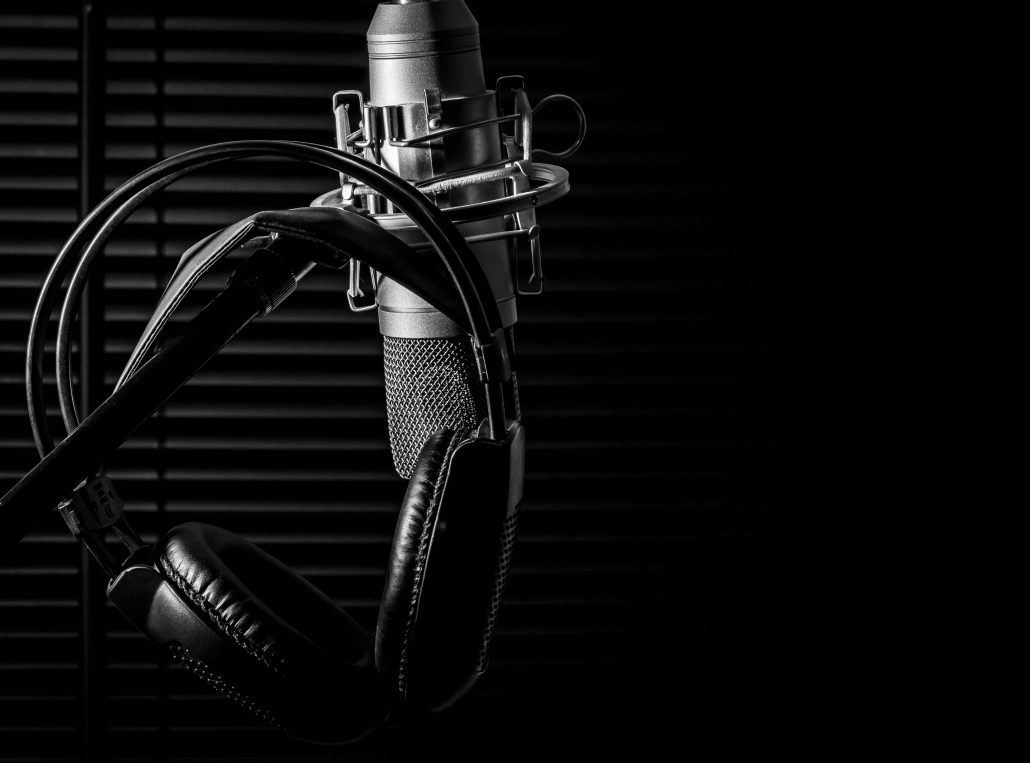
Eminem; Marshall Bruce Mathers III; The Real Slim Shady, is not just an icon in rap who had an unfathomable impact on hip-hop culture. He is also a man who has endured a lifetime of public controversy, private conflict, personal loss and emotional pain. Not only does this make his music career that much more powerful, but it makes his journey through addiction and recovery that much more gripping. With Eminem celebrating 10 years of sobriety this month, we take a quick look at the story of sober Slim Shady.
Eminem Celebrating Sobriety
A few days ago, between his headlining sets at this year’s Coachella, 45-year-old Marshall Mathers took to social media to share a message with his fans. On Instagram Slim Shady posted a photo of his ten-year medallion on Saturday, April 21. The circle, marked with an ‘X’ for the Roman numeral ten, is a token he received to commemorate a decade of continuous sobriety. To caption the image, he wrote:
“Celebrated my 10 years yesterday”
In just 2 days’ time, the image had already garnered over 1.7 million likes and over 33,000 comments. He wasn’t the only one utilizing his social status to share that powerful moment. Fellow rap artist and friend in sobriety Royce Da 5’9” also took to Twitter to give the real Slim Shady a shout out for his recovery milestone, writing:
“Happy sobriety birthday to my mentor @Eminem… Keep fighting the good fight homie… I love you for life”
Eminem has also shared moments of his journey through recovery with other famous sober peers, including Sir Elton John. The post prompted many fans on social media to congratulate Mathers on his anniversary. Others shared how he had helped inspire many others in recovery.
The last ten years have not been easy for Slim Shady, but it seems they have been worth it.
A Quick Look at a Legend
Long before Eminem got sober, he was a household name and best selling artist. Over his whole career, he has had a truly incredible list of accomplishments, including:
- 10 number-one albums on the Billboard 200
- Five number-one singles on the Billboard Hot 100
- 4 million albums sold in the US
- 220 million records globally
- He is among the world’s best-selling artists of all time
- He is the only artist to have eight albums consecutively debut at number one on the Billboard 200
- Winner of 15 Grammy Awards, including Best Rap Album
All of this, not to mention successful clothing lines, the creation of his label Shady Records which helped launch artists like 50 Cent and Yelawolf, and his own Sirius XM Radio channel, Shade 45. He gave us such gifts as D12 and Slaughterhouse, while also inspiring countless other artists.
Eminem isn’t only known for his music, but also for the controversy surrounding him. Whether it was the ugly battles with his mother, ex-wife, or the legal trouble he was conflicted with publically, it all fueled an image of a man who lived in a courtroom fighting painful scandals. He used the pain in his creative process, and the world was given a lot of angry, violent, and even poetic moments.
The Academy Award-winning film 8 Mile, which he starred in, made him the first rap artist to ever win the award for Best Original Song with “Lose Yourself”. Followed by various other film and entertainment ventures.
Oh, and don’t forget the Marshall Mathers Foundation, which aids disadvantaged youth.
The list just goes on and on. There is not enough time here to cover the truly immeasurable impact Eminem has had on not just hip-hop culture, but on the overall culture in America.
Getting to 10 Years
Slim Shady has always been pretty public about his struggles with addiction to prescription drugs. It is laced in his image over the years and is a prominent subject of his music. Back in 2002, a fellow artist said he had been trying to straighten out, but while working on 8 Mile he was introduced to Ambien and this prescription took him deeper down the path. When talking about working on his album Encore, Slim Shady once said he would “just go into the studio and goof off [with] a pocketful of pills”.
In 2007, Eminem suffered from an accidental methadone overdose after his addiction had spiraled out of control. At one point he revealed that he was taking up to 60 Valium and 30 Vicodin pills a day. After adding Ambien to the mix, he made his way to methadone by the end of his substance abuse. In 2011 when interviewed about the overdose, he stated:
“The doctors told me I’d done the equivalent of four bags of heroin… They said I was about two hours from dying.”
In a 2011 New York Times interview Slim Shady said,
“I used to get pills wherever I could. I was just taking anything that anybody was giving to me.”
Following that near-death experience, the Detroit rap legend chose to attend an addiction treatment program in Michigan. However, he ended up relapsing short of a month out of the hospital.
He reported that his star status made rehab difficult for him to focus on himself. Instead, he chose to detox at a hospital and dove into counseling and therapy. He credits his children, including his biological daughter Hailie, and two adopted daughters Lainey and Whitney. He also gives credit to exercise, saying that running helped him find a healthier high that helped him sleep.
When looking at his story, it is absolutely remarkable the impact that Slim Shady had had on the world of hip-hop or just music in general. He has been described by many as one of the greatest artists of all time, with billions of fans all over the globe. To hear about the life he lived; through poverty, depression, desperation, and addiction, to be a living legend only speaks to the inspiration in his experience, strength and hope. We celebrate the path Eminem walks and the work he has done over the years to make it this far.
Thank you for sharing, Slim Shady.
It can be a real inspiration to see some of the most successful people are recovering alcoholics and addicts. It reminds us that we all can suffer the same way and that we all have the same chance to build a better future. The more heroes we have every day that step up and share their message of hope, the more hope we may have that people seek the help they desperately need. If you or someone you love is struggling with substance abuse or addiction, please call toll-free now.
CALL NOW 1-888-922-5398
by Justin Mckibben | Apr 18, 2018 | Addiction, Anti-Social Personality Disorder, Anxiety Disorder, Depression, Dual Diagnosis, Mental Health, Mood Disorders, Post-traumatic Stress Disorder, Schizophrenia

(This content is being used for illustrative purposes only; any person depicted in the content is a model)
It is not so far-fetched to be told that someone whose life is consumed with drug or alcohol dependency can find themselves facing the emotional and mental fallout. When dealing with mental health issues, it is not rare for people to also struggle with substance use disorder. Co-occurring conditions such as these tend to feed off of each other, or even help create one another.
It is almost like when someone has high blood pressure, we are not surprised when they develop heart problems. Sometimes side effects and symptoms of one condition can nurture new ailments.
According to so researchers, there are some more common combinations of co-occurring disorders with addictions. So which addictions are most likely to co-exist with each mental health condition?
Here are 5 of the most common co-occurring disorders with addictions (not in any particular order):
-
Schizophrenia with Marijuana Addiction
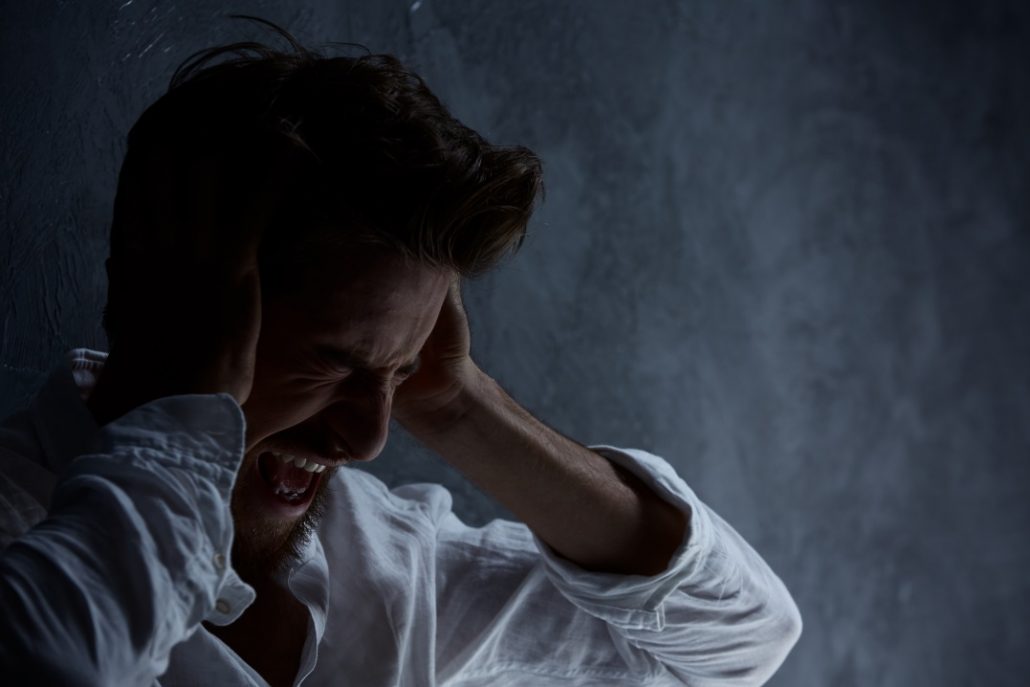
One disorder that commonly co-exists with a substance use disorder is schizophrenia. The American Journal of Psychiatry released a study that suggests approximately half of all people with schizophrenia also have a substance abuse disorder.
But one substance stands out the most when looking at people living with schizophrenia- marijuana.
The exact cause of schizophrenia is unknown, but many suspect a combination of environment, genetics and altered brain chemistry and structure to all play a part. So it is unclear why people with schizophrenia would abuse marijuana. Especially since this drug typically produces many of the same symptoms these people experience when in the midst of a schizophrenic episode. Some of these symptoms include:
- Short-term memory problems
- Delusions
- Unusual or dysfunctional ways of thinking
- Difficulty beginning and sustaining activities
- Impaired executive functioning
While not all symptoms are the same for everyone, some of these more common symptoms definitely overlap between the two. While it may not be obvious why, research suggests it is pretty obvious that marijuana is most popular for people with schizophrenia.
-
Alcoholism and Anti-Social Personality Disorder

You might be surprised with this one because most people assume alcohol is most commonly matched with depression.
Anti-social personality disorder is easier to understand when one explains the concept of personality disorders in general.
To put it simply, a personality disorder is an enduring pattern of personal experience and behavior that deviates noticeably from the expectations of the individual’s culture, which leads to personal distress of impairment. So antisocial personality disorder (ASPD) is characterized by a tendency to disregard and even violate the rights of others. Symptoms can vary from egregious to outright dangerous. They include:
- Irritability
- Aggressiveness
- Lack of remorse
- Consistent irresponsibility
- Recklessness
- Impulsivity
- Deceitfulness
- Lack of stability in a job and home life
- Disregard for society and laws
- Violation of the physical or emotional rights of others
Often the more intense cases earn the titles of sociopathic or psychopathic.
Alcohol abuse very frequency co-occurs with other mental health disorders. However, according to the National Institute on Alcohol Abuse and Alcoholism (NIAAA), the disorder with the closest connection to alcoholism is anti-social personality disorder.
In fact, people who drink to excess on a regular basis are 21 times more likely to deal with ASPD when compared to people who don’t have alcoholism.
The NIAAA also states that both of these disorders typically develop early in life. However, alcoholism can actually make the underlying mental illness worse. Intoxication can lower an individual’s inhibitions, which makes their antisocial behaviors more prevalent. This may also lead to more dangerous manifestations of the disorder.
-
Anxiety Disorders and Cocaine Addiction

Cocaine is an extremely powerful narcotic stimulant, which gives users feelings of intense euphoria. However, the tradeoff is a very steep price to pay considering how dangerous this drug really is. Continued cocaine use typically leads to symptoms that essentially mirror an anxiety disorder, including:
- Restlessness
- Hallucinations
- Paranoia
- Insomnia
- Difficulty concentrating
- Aggression
Because cocaine is a stimulant, it speeds up and amplifies activity of the brain’s neurotransmitters. Certain neurotransmitters at higher levels induce anxiety. So anxiety is actually a symptom of cocaine use already. Cocaine use also has the potential to create psychotic episodes. Some people even experience severe mental symptoms as a result of use.
As a long-term effect of cocaine use, brain circuits are more sensitive while struggling to respond to natural stimuli, and the results are often related to mood and mental health. Statistics show that there is a very high risk of anxiety and cocaine abuse occurring together. Then if you already have an anxiety disorder, the risk becomes even higher that you will develop a severe emotional problem when using a drug like cocaine.
While the adverse effects of cocaine use can eventually fade for those able to achieve a long-lasting sobriety, sometimes the damage lingers. Those unusual thoughts and behaviors can continue even long after someone has given up the drug.
-
Prescription Opioid Addiction and PTSD
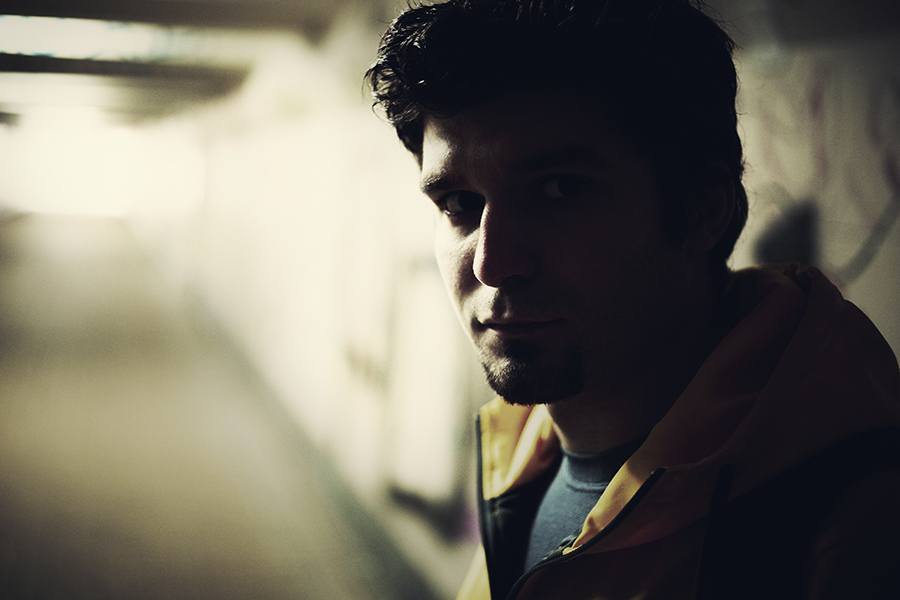
Post-traumatic stress disorder (PTSD) is a mental illness that takes hold in the aftermath of an intense and traumatic experience. Often, people who survive tragedies, war and other dangerous or life-altering events will experience PTSD.
In some circumstances, people will leave their experience with serious physical injuries, and often, those injuries are treated with prescription painkillers. This is just one way that prescription opioids have contributed to a huge epidemic that has been hurting America for the past several years.
Prescription opioids often boost feelings of pleasure and calm inside the brain, and sometimes people who have PTSD end up abusing these medications in order to experience euphoria and numb themselves to not just their physical agony, but also their emotional trauma. This can become an endless cycle of self-medicating. This is especially true with veterans. In fact, some research indicates that veterans with pain and PTSD are 3 times more likely to receive opioids compared to those without any mental health disorders.
It is true that having effective pain medications is very important to improve the quality of life for those with physical pain, especially chronic pain patients. However, mixing powerful opioids like prescription painkillers with PTSD can lead to tragic outcomes. With increasing rates of veteran suicides over the past several years, one can only image what impact the surging opioid crisis may have had on those struggling with PTSD.
-
Depression with Heroin Addiction

Throughout one of the worst drug epidemics in American history, heroin has been a driving force behind countless overdoses and skyrocketing death rates. Heroin isn’t just devastating physically, but also mentally and emotionally crippling. The connection between these adverse effects and depressive disorders is remarkable.
The allure of heroin is that is can make users feel an overwhelming sense of pleasure for a short time. However, long-time use of heroin can burn out the portions of the brain responsible for producing natural signals of pleasure, leaving them incapable of feeling good on their own without the drug. The drug alters brain chemistry and creates mood changes.
Advances in Psychiatric Treatment estimates that 48% of opioid users have experienced depression at some point in their lives.
Extended use of heroin can eventually cause a form of brain damage that leads to depression. Users can become physically incapable of feeling happiness unless the drug is present. Withdrawal symptoms from heroin can also exacerbate symptoms of depression. Many of them are actually overlapping symptoms, such as:
- Restlessness
- Irritability
- Slow thinking, speaking or body movements
- Loss of interests
- Sleep problems
- Physical pains
- Headaches
- Changes in appetite
The combination of depression and heroin addiction is incredibly common. Sometimes it can be difficult for people to tell which issue came first, but ultimately they can both be exceedingly debilitating, or even deadly.
Dual Diagnosis Treatment

Dual diagnosis means that a person is dealing with two medical conditions that are co-occurring. In regards to the field of drug addiction, dual diagnosis specifically means that someone is struggling with both substance use disorder and another mental or behavioral health issue. Sometimes it is because prolonged drug use has contributed to developing a mental health issue, while other times it is because someone has tried to self-medicate when facing a mental health issue.
Dual diagnosis treatment is so important because it provides the opportunity to treat both co-occurring disorders simultaneously. For those suffering with more than one disorder, it is not nearly as effective to focus on treating one while ignoring the other. Holistic healing is all about addressing every aspect of each individual to help them find success in every part of their life.
Palm Healthcare Company believes in providing holistic addiction resources to help treat not just the addiction, but also any other issue that could be holding you back from achieving a full life of lasting recovery. If you or someone you love is struggling, please call toll-free now.
CALL NOW 1-888-922-5398
by Justin Mckibben | Apr 13, 2018 | Addiction, Drug Policy, Marijuana, Medical Marijuana, News
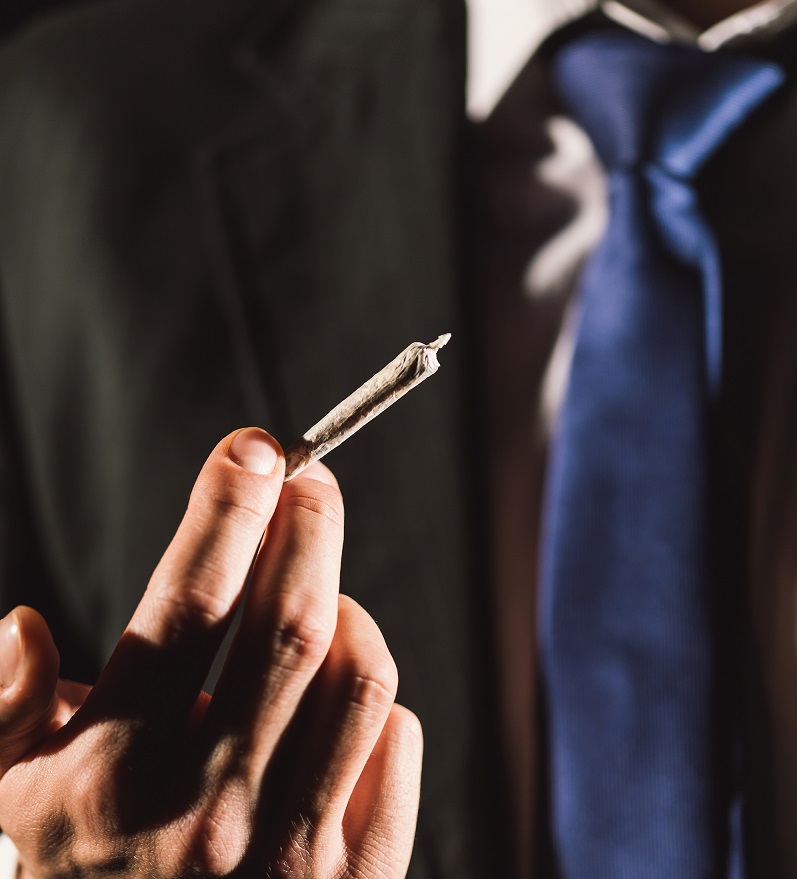
Anyone who pays attention to politics has a lot to talk about this week. There is plenty going on in the world of government, from Facebook and Congress to scandals and controversy. But one bit of surprising news comes from someone who has stepped away from politics for some time now. John Boehner, well-known figure in the Republican Party, recently has made a dramatic shift in support of cannabis legalization.
Who is John Boehner?
Just to provide a little background, John Boehner is an American politician who served as the 53rd Speaker of the United States House of Representatives from 2011 to 2015. He served on behalf of Ohio’s 8th congressional district from 1991 to 2015. This district includes rural and suburban areas near Cincinnati and Dayton.
For a long time, John Boehner was known for his hard-line stance against marijuana legalization. At one point he was even quoted as saying he was “unalterably opposed” to legalizing marijuana. While serving in government, Boehner was never an ally for marijuana advocates, and the only vote he ever cast on the topic of legalization was in 1999 when he fought against medical marijuana in Washington.
In fact, one advocate remembers Boehner as being in strong opposition to marijuana while in office. The executive director of the National Organization for the Reform of Marijuana Laws, Erik Altieri, said Boehner has actually opposed “even the mildest of marijuana law reforms.”
So many have seen this sudden endorsement from John Boehner for marijuana reform as a sign of the times, and how much the political landscape has changed.
Acreage Holdings
Acreage Holdings is a company that cultivates, processes and dispenses cannabis in 11 states around America. On the company website they state:
“These combined markets represent $9 billion in potential revenue by 2020, and we’re ready to move forward as legislation allows.”
The website also states:
“2018 is going to be a record-breaking year for Acreage, as we expect production to increase in several lucrative states including New York, Florida, California, Pennsylvania, Maryland and Maine. We’re looking beyond this year, however, with a comprehensive strategy that will make us the world’s largest fully-integrated cannabis company.”
With recent reforms the cannabis industry has a growing potential for profit. So there is no wonder John Boehner is now going to be joining the board of advisors at Acreage Holdings.
To sum it up, the company works to “make cannabis available to any patient who can benefit from safe and reliable access.”
Pro-Cannabis Change of Heart
So why the drastic change of heart? According to a tweet from Boehner:
“I’m joining the board of #AcreageHoldings because my thinking on cannabis has evolved. I’m convinced de-scheduling the drug is needed so we can do research, help our veterans, and reverse the opioid epidemic ravaging our communities.”
In one interview on the subject, Boehner stated:
“Over the last 10 to 15 years, the American people’s attitudes have changed dramatically. I find myself in that same position.”
Boehner said his change of heart really started when he watched cannabis help a close friend deal with their back pain. Then, he said, “you begin to really scratch your head” when looking at how many people are in prison for marijuana possession.
Still, Boehner maintains he has NOT tried using cannabis and does not intend to.
There is another name from the Republican Party standing with Boehner; Massachusetts Governor Bill Weld is also joining the board of Acreage Holdings. In a joint statement, both men say they think it is time for consideration of shifting federal marijuana policy. They pointed out the specific value cannabis could hold for veterans for treating things like:
Opinions from Advocates
Erik Altieri says that having John Boehner in their corner could be a huge help to marijuana advocates. Altieri believes it is crucial for Republican leaders like Boehner to take charge on this issue, stating:
“If this is only led by Democrats, we will continue to see no forward momentum on this issue. We really need to present this as the bipartisan issue it really is.”
Other advocates are still saying Boehner should be using his influence to work with people still in office toward better policy. Morgan Fox, a spokesman for Marijuana Policy Project, said:
“[Boehner] should be actively working to reform federal marijuana laws to allow states to determine their own policies, rather than just consulting with a business to navigate the conflicts between state and federal law.”
Talking about head scratching- it’s too bad he didn’t have that realization while still in office. Especially when you consider nearly half a million people were arrested for selling marijuana during his term as speaker.
New York Times also reports that Morgan Fox stated:
“[Boehner’s] positions on the issue while in House leadership most likely slowed progress for marijuana reform legislation, and he owes it to anyone whose life has been negatively impacted by a marijuana arrest to use his considerable influence to make up for that.”
According to a recent Gallup poll, the United States is currently at a record high for support of marijuana, with:
- 64% of Americans said marijuana should be legalized
- 72% of Democrats support it
- 51% of Republicans support it
Needless to say, stock in the cannabis industry mainstays saw a decent spike following the announcement from Boehner. Some argue that Boehner is just selling his influence to cash in on the up-and-coming cash crop. However, others say either way it is good for those hoping for an end to the old policies of prohibition.
As cannabis reform continues to evolve, there should also be resources available for those who do struggle with drug or alcohol abuse. Even as the substance becomes more widely accepted or even legalized, there will still be people who suffer from substance use disorder. As we support progressive changes in drug policy, we also need to make sure people have access to drug and alcohol treatment.
Supporting addiction recovery means breaking the stigma and offering holistic and effective solutions. Palm Healthcare Company is here to help. If you or someone you love is struggling, please call toll-free now.
CALL NOW 1-888-922-5398













